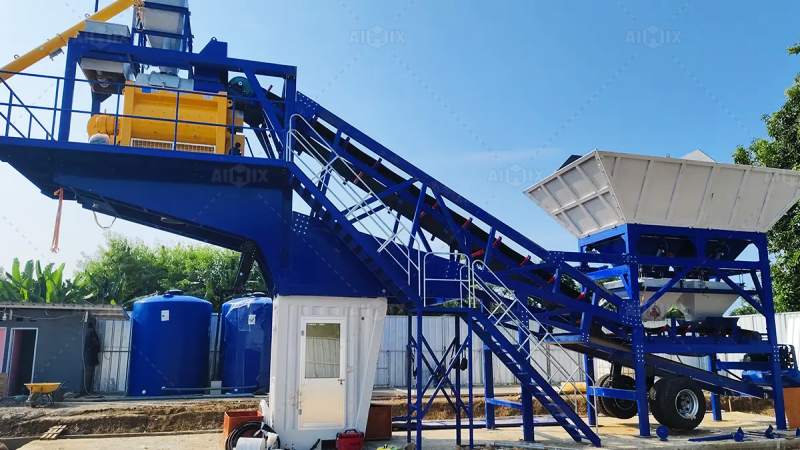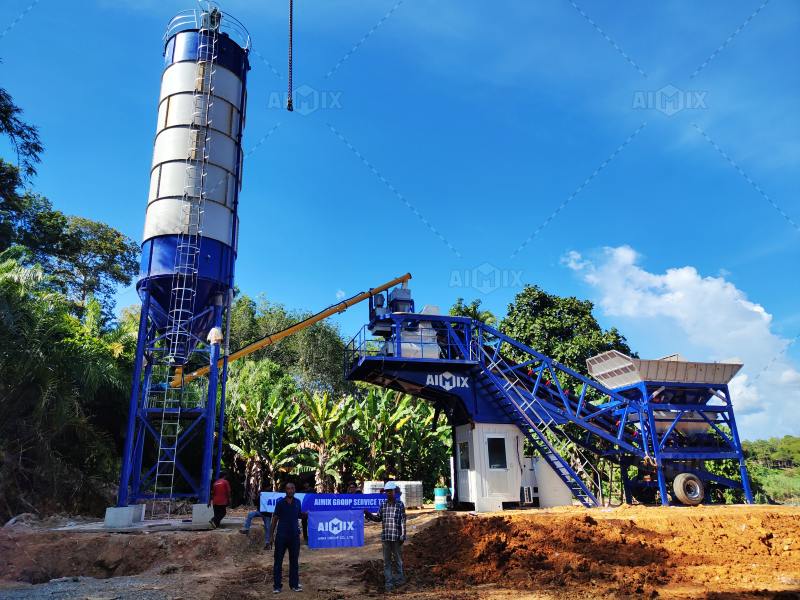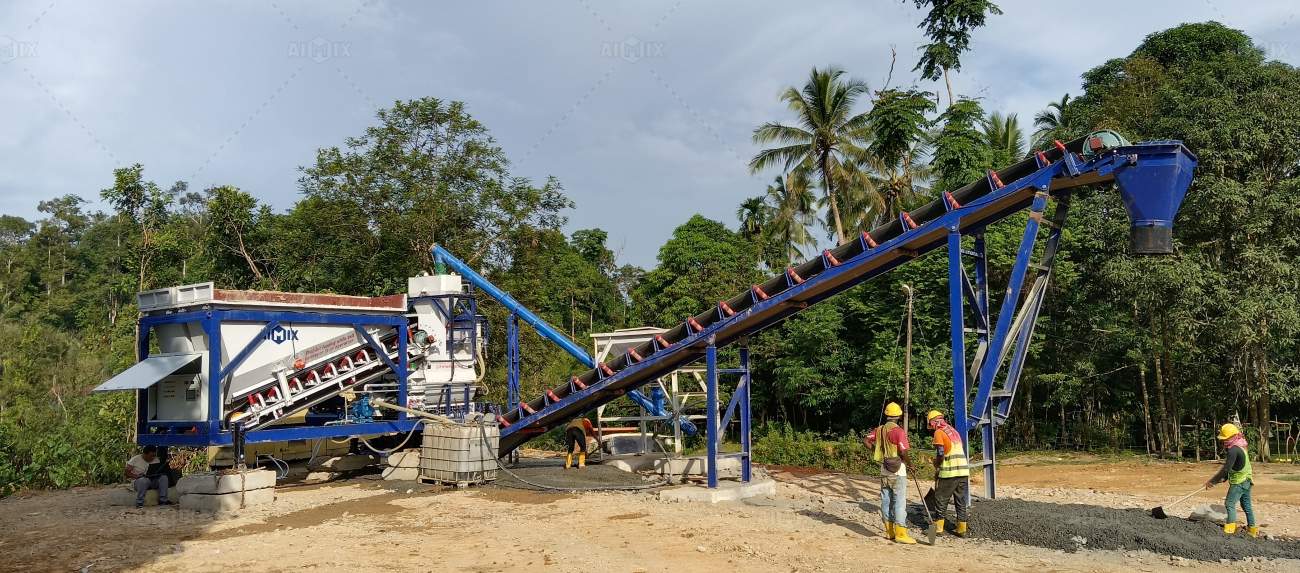In the fast-paced construction industry, efficiency and cost-effectiveness are critical for project success. A portable concrete plant for sale offers contractors and construction companies a flexible and practical solution to produce concrete on-site while optimizing labor and operational costs. Compared to traditional methods, portable plants reduce reliance on large workforces, minimize transportation expenses, and ensure consistent concrete quality, making them increasingly popular across various projects. This article explores how portable concrete plants achieve cost savings, and compares them with other types of concrete batching plant, including stationary concrete batching plants.

Flexibility and Labor Optimization
One of the primary advantages of a portable concrete plant for sale is its flexibility. Unlike stationary concrete batching plants, which are fixed at a single location, portable plants can be relocated from site to site with minimal downtime. This mobility eliminates the need for repeated material transport from a central plant to construction sites, significantly reducing labor hours and associated costs.
Portable plants are often designed with automation in mind, allowing one or two operators to manage production efficiently. Advanced control systems, including PLC-based automation and touchscreen interfaces, reduce the need for manual measurements, monitoring, and adjustment. This results in fewer labor requirements and fewer chances for human error, ultimately saving money on wages and improving overall production efficiency.
Operational Cost Savings
Operational costs in concrete production encompass energy usage, maintenance, material handling, and transportation. A portable concrete plant for sale addresses these costs in several ways:
-
Reduced Transportation Costs – By producing concrete directly on-site, portable plants eliminate the need for multiple concrete truck trips from a distant stationary plant. This not only saves fuel and labor but also reduces wear and tear on vehicles.
-
Efficient Material Handling – Portable plants are designed with compact layouts that optimize aggregate, cement, and water handling. Shorter conveyor distances and efficient batching systems reduce energy consumption, lowering electricity costs compared to some types of concrete batching plant that require longer material transport lines.
-
Lower Maintenance Costs – Due to their modular and simplified design, portable concrete plants require less maintenance than larger, more complex stationary concrete batching plants. Routine cleaning and inspections can be performed quickly by a small team, minimizing downtime and maintenance expenses.

Comparison with Stationary Concrete Batching Plants
While portable plants are ideal for smaller, temporary, or remote projects, stationary concrete batching plants remain a reliable choice for large-scale operations requiring high production volume. Stationary plants typically offer greater output capacity and more sophisticated mixing options, but they come with higher labor requirements, increased energy consumption, and higher initial investment.
In contrast, portable concrete plants allow contractors to scale operations according to project demands. They are particularly advantageous for urban projects, road construction, and small-to-medium residential developments where mobility and rapid setup are crucial. Contractors can achieve operational efficiency without committing to the infrastructure and personnel that stationary concrete batching plants necessitate.
Types of Concrete Batching Plant
Understanding the types of concrete batching plant is essential when considering a portable option. Generally, concrete plants fall into two categories: dry mix batching plants and wet mix plants.
-
Dry Mix Plants: In these plants, aggregates, sand, and cement are weighed and blended in a dry state before being discharged into a concrete mixer truck. Dry mix plants are simpler, require less water management, and are easier to relocate, making them ideal for portable setups.
-
Wet Mix Plants: Wet mix plants combine all ingredients, including water, in a central mixer before dispatching the concrete. These plants produce a more uniform mix and reduce mixing time at the construction site, but they require more energy and careful maintenance, which can increase operational costs. Portable wet mix plants are available, providing the benefits of consistency while maintaining mobility.
Other types of concrete batching plant include specialized plants such as mobile RMC plants, compact mini batching plants, and high-capacity modular units. Choosing the right type depends on production requirements, project size, and labor availability.

Enhancing Cost Efficiency Through Smart Features
Modern portable concrete plants often integrate smart features that further reduce labor and operational costs:
-
Automated Batching Systems: Precisely measure and control materials, reducing waste and manual labor.
-
Remote Monitoring: Operators can manage multiple portable plants from a central location, minimizing on-site staffing needs.
-
Energy-Efficient Mixers and Motors: Reduce electricity consumption while maintaining consistent concrete quality.
-
Quick Setup and Modular Design: Shortens installation time, allowing projects to begin production rapidly with minimal labor.
By leveraging these features, construction companies can optimize both human resources and operational expenses without compromising on the quality or consistency of the concrete.
Conclusion
A portable concrete plant for sale offers a cost-effective solution for construction companies aiming to optimize labor and operational expenses. Compared with stationary concrete batching plants, portable units provide unmatched flexibility, reduced transportation costs, and simplified maintenance. Understanding the types of concrete batching plant available and selecting a portable plant that aligns with project requirements ensures efficient, high-quality concrete production while minimizing workforce and energy costs.
Investing in a portable concrete plant is not just a financial decision—it’s a strategic choice for improving productivity, reducing overhead, and achieving sustainable construction operations across multiple projects.